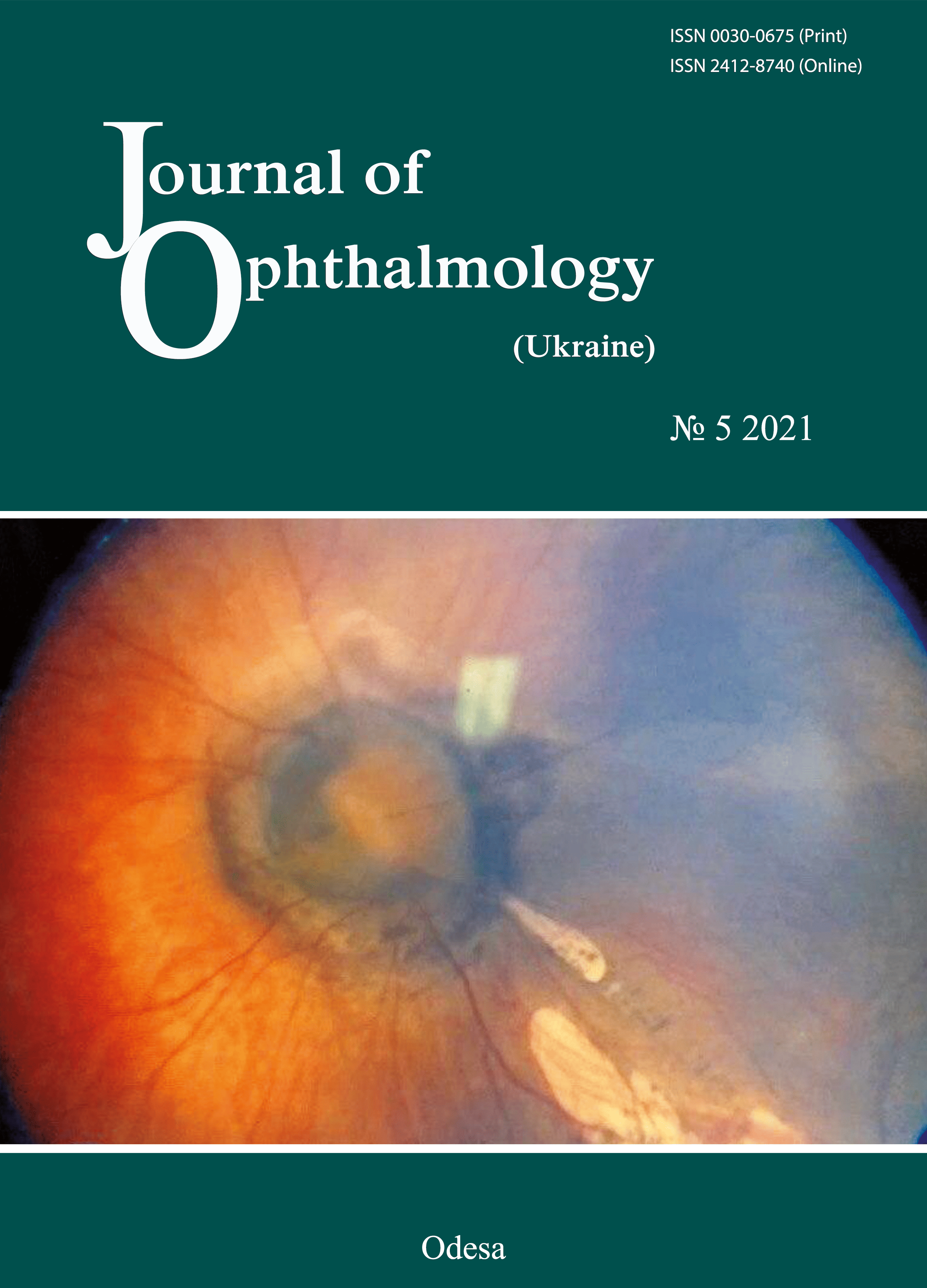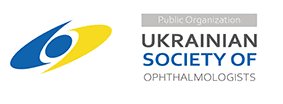Visual disturbances before and after transnasal endoscopic surgery for craniopharyngiomas
DOI:
https://doi.org/10.31288/oftalmolzh202153540Keywords:
skull-base tumors, craniopharyngioma, chiasmal syndrome, compressive optic neuropathy, chiasmal blood supply, devascularization of the chiasm, transnasal endoscopic surgeryAbstract
Background: Craniopharyngiomas (CP) are benign epithelial tumors of the chiasmal and sellar region and/or the third ventricle region which arise from embryonic remnants of Rathke’s pouch. They are in close proximity to the surrounding nervous, endocrine and vascular structures of the brain such as the chiasm, optic nerves and tracts, hypothalamus, pituitary stalk, major vessels and their branches, including perforating branches of the anterior cerebral, posterior communicating, and posterior cerebral arteries. Tumor relation to the optic tracts is an important aspect of surgery for CP. The blood supply to the optic nerve/chiasm complex is usually not affected, which allows maintaining it perioperatively; however, sometimes in radical surgery for CP there is elimination of some perforating arteries from the blood supply and devascularization of the chiasm, causing ischemic abnormalities in the chiasm.
Purpose: To determine the features of visual disturbances before and after surgery for craniopharyngioma.
Material and Methods: We examined the medical records of a cohort of 61 patients who underwent treatment including transnasal endoscopic surgery for suprasellar craniopharyngioma at the Transsphenoidal Neurosurgery Department, Romodanov Neurosurgery Institute, during the period from 2017 through 2020. The main group included 48 patients (96 eyes). Of these, 46 patients had presented with visual disturbances (reduced visual acuity and/or visual field defects), and 2 patients exhibited them after, but not before surgery. Patients underwent clinical and neurological, eye, and otoneurological examination.
Results: Visual disturbances in the presence of suprasellar craniopharyngiomas were found in 46 patients (75%), and their amount and severity substantially varied, which was associated with mechanical compression of the chiasm, growth of the tumor into the optic nerve and chiasm, as well as impaired chiasmal blood supply. The pupillomacular bundle and optic tracts are involved in exerting an effect on the posterior chiasm in suprasellar CP, which was reflected by the predominance of the symmetric chiasmal syndrome (39.1%) with bilateral optic atrophy, and accompanied by reduced visual acuity (78.3%), visual field defects (96.7%), bitemporal heteronymous hemianopia with central scotoma (27.2%), bitemporal paracentral scotoma (22.8%) and homonymous hemianopia (6.5%). The surgical treatment resulted in improvement or restoration of visual functions in 58.3% of patients. Postoperative worsening of visual functions was observed not only in patients who did exhibit visual disturbances preoperative (16.6%) but also in those who did not (4.2%), which was due to devascularization of the chiasm in radical surgery for CP.
Conclusion: Transnasal endoscopic surgery for CP enables direct visualization and surgical control of the vessels supplying the chiasm. In addition, this approach allows performing a rather radical surgery with as low as 20.8% postoperative frequency of visual loss or appearance of visual disturbances.
References
1.Cavallo LM, Frank G, Cappabianca P, Solari D, Mazzatenta D, Villa A, et al. The endoscopic endonasal approach for the management of craniopharyngiomas: a series of 103 patients. J Neurosurg. 2014;121(1):100-13. https://doi.org/10.3171/2014.3.JNS131521
2.Kassam AB, Prevedello DM, Carrau RL, Snyderman CH, Thomas A, Gardner P, et al. Endoscopic endonasal skull base surgery: analysis of complications in the authors' initial 800 patients. J Neurosurg. 2011;114(6):1544-68.https://doi.org/10.3171/2010.10.JNS09406
3.Yasargil MG. Microsurgery Applied to Neurosurgery. Stuttgart: Thieme, 1969.
4.Louis DN, Ohgaki H, Wiestler OD, Webster KC, Burger PC, Jouvet A, et al. The 2007 WHO classification of tumours of the central nervous system. Acta Neuropathol. 2007;114(2):97-109.https://doi.org/10.1007/s00401-007-0243-4
5.Mortini P, Gagliardi F, Boari N, Losa M. Surgical strategies and modern therapeutic options in the treatment of craniopharyngiomas. Crit Rev Oncol Hematol. 2013 Dec;88(3):514-29.https://doi.org/10.1016/j.critrevonc.2013.07.013
6.Karavitaki N, Brufani C, Warner JT, Adams C, Richards P, Ansorge O, et al. Craniopharyngiomas in children and adults: systematic analysis of 121 cases with long-term follow-up. Clin Endocrinol (Oxf). 2005 Apr;62(4):397-409.https://doi.org/10.1111/j.1365-2265.2005.02231.x
7.Wall M, George D. Visual loss in pseudotumor cerebri: incidence and defects related to visual field strategy. Arch Neurol. 1987 Feb;44(2):170-5.https://doi.org/10.1001/archneur.1987.00520140040015
8.Gibo H, Lenkey C, Rhoton AL. Microsurgical anatomy of the supraclinoid portion of the internal carotid artery. J Neurosurg. 1981 Oct;55(4):560-74.https://doi.org/10.3171/jns.1981.55.4.0560
9.Repka MX, Miller NR, Miller M. Visual outcome after surgical removal of craniopharyngiomas. Ophthalmology. 1989 Feb;96(2):195-9.https://doi.org/10.1016/S0161-6420(89)32914-9
10.10. GrkovićD, Barisić S. Postoperative visual recovery following surgical treatment of craniopharygiomas. Med Pregl. Mar-Apr 2016;69(3-4):79-84.https://doi.org/10.2298/MPNS1604079G
11.Koutourousiou M, Gardner PA, Fernandez-Miranda JC, Elizabeth C, Tyler-Kabara, Wang EW, et al. Endoscopic endonasal surgery for craniopharyngiomas: surgical outcome in 64 patients. J Neurosurg. 2013;119(5):1194-207.https://doi.org/10.3171/2013.6.JNS122259
12.Jacobsen MF, Thomsen AS, Bach-Holm D, Doroudian G, Nissen KR, Fugleholm K, et al. Predictors of visual outcome in patients operated for craniopharyngioma - a Danish national study. Acta Ophthalmol. 2018 Feb;96(1):39-45.https://doi.org/10.1111/aos.13483
13.Pereira AM, Schmid EM, Schutte PJ, Voormolen JH, Biermasz NR, Sjoerd W, et al. High prevalence of long-term cardiovascular, neurological and psychosocial morbidity after treatment for craniopharyngioma. Clin Endocrinol (Oxf). 2005 Feb;62(2):197-204.https://doi.org/10.1111/j.1365-2265.2004.02196.x
14.Kim SM, Kim SH, Seo DW, Lee KW. Intraoperative Neurophysiologic Monitoring: Basic Principles and Recent Update. J Korean Med Sci. 2013; 28(9):1261-1269.https://doi.org/10.3346/jkms.2013.28.9.1261
Downloads
Published
How to Cite
Issue
Section
License
Copyright (c) 2025 Е. С. Егорова , А. А. Чуков , Н. А. Гук , О. Е. Скобская , Л. В. Задоянный , М. Р. Костюк

This work is licensed under a Creative Commons Attribution 4.0 International License.
This work is licensed under a Creative Commons Attribution 4.0 International (CC BY 4.0) that allows users to read, download, copy, distribute, print, search, or link to the full texts of the articles, or use them for any other lawful purpose, without asking prior permission from the publisher or the author as long as they cite the source.
COPYRIGHT NOTICE
Authors who publish in this journal agree to the following terms:
- Authors hold copyright immediately after publication of their works and retain publishing rights without any restrictions.
- The copyright commencement date complies the publication date of the issue, where the article is included in.
DEPOSIT POLICY
- Authors are permitted and encouraged to post their work online (e.g., in institutional repositories or on their website) during the editorial process, as it can lead to productive exchanges, as well as earlier and greater citation of published work.
- Authors are able to enter into separate, additional contractual arrangements for the non-exclusive distribution of the journal's published version of the work with an acknowledgement of its initial publication in this journal.
- Post-print (post-refereeing manuscript version) and publisher's PDF-version self-archiving is allowed.
- Archiving the pre-print (pre-refereeing manuscript version) not allowed.












